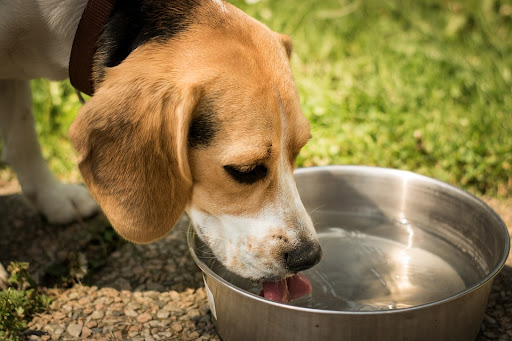Table of Contents
Cooling | Anatomy | Drinking | Health | Breed Differences | Communication
1. Dogs Use Their Tongues to Stay Cool
Dogs rely on their tongues to stay cool in warm weather. They are able to cool themselves by panting, but their tongues also help. Dogs’ tongues contain salivary glands that produce a large amount of saliva.
Dogs also use their tongues to help regulate their body temperature, as a tongue has a large surface area and is in direct contact with the surrounding environment.
2. Dog's Unique Tongue Anatomy
One of the most interesting and unique parts of a dog’s anatomy is its tongue. This highly specialized organ is adapted to its environment and diet. The canine tongue consists of a cluster of small, hard, spade-shaped teeth that allow them to pick up and eat small items like bones, kibble, and treats.
Along the top of the tongue, there are lower-set small, hard, pointed structures called papillae. These papillae act like a brush and help the dog to keep its face clean and dry.
3. A Dog's Weird Way to Drink
A dog's unique way of drinking is potentially one of the most surprising dog tongue facts. When drinking water, dogs will extend their tongues into the liquid and lap it up into the back of their throat like a scoop.
As the dog's tongue touches the liquid, the water quickly forms a column of sorts. This column rises up and is readily ingested by the animal when the tongue is extended.
4. A Dog's Tongue Relates to Their Health
A dog's tongue can be an important indicator of their health. Changes in color can indicate a variety of medical issues, from anemia to dehydration and sometimes even a reaction to a medication.
The texture of a dog's tongue is also a crucial element in assessing the health of the pet. A normal tongue should appear rough, but a healthy one should be slightly glossy.
5. Dog Tongues Across Different Breeds
Different breeds of dogs have tongues that vary in size, shape, and texture. The size and shape of the tongue have much to do with the size of the bred. Generally, smaller dogs have more pointed tongues, and larger dogs have broader, flatter tongues.
In addition, the texture of the tongue varies among breeds. Furthermore, some breeds have unique coloration on the tongue.
6. Adaptations of Dog Tongues for Communication
Have you ever wondered why dogs licking your feet? Dogs have an incredible ability to adapt their tongues for communication. They can show affection, groom their fur and other animals, play and even lick wounds.
They can also use their tongues to explore objects they come in contact with. Dogs also lick the hands and faces of humans they know as a sign of affection or a friendly greeting.
Wonders of Dog Tongues
Overall, dog tongues are fascinating organs. Although a lot of their special abilities are connected to survival, other interesting facts make dogs even more intriguing. From their ability to communicate to their capability to clean their fur and bodies, dog tongues are truly remarkable.
If you’re a dog lover, learn more about their culture and habits to truly appreciate their incredible characteristics.
Was this article helpful? If so, please keep reading for more great content.

